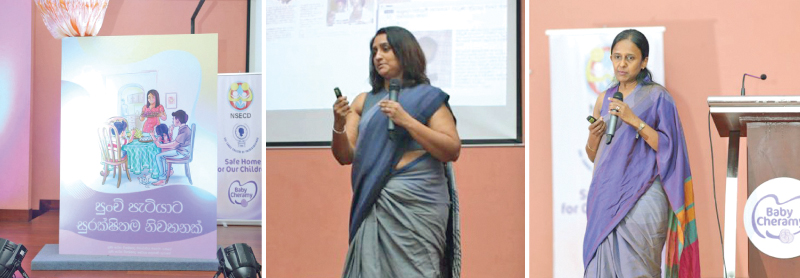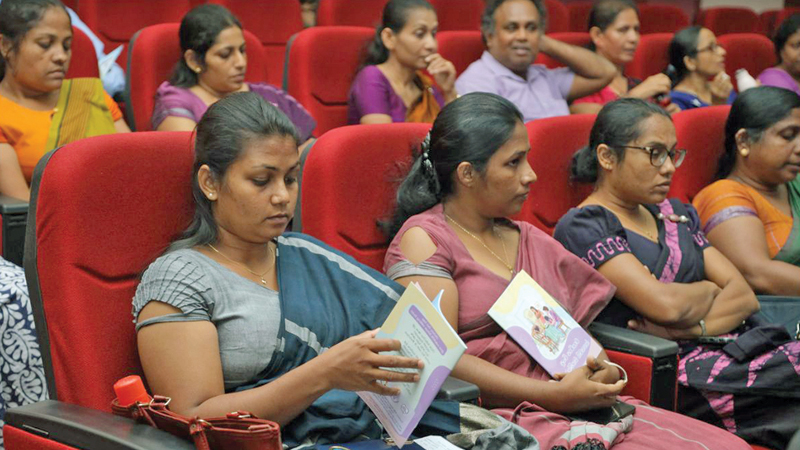
The Sri Lanka College of Paediatricians and Baby Cheramy, a brand dedicated to ensuring the safety of children nationwide have united their efforts to foster a secure environment for the children of our nation. A recent awareness program took place at the Setsiripaya Urban Development Authority Auditorium for officials from the Early Childhood Development Secretariat under the Ministry of Women, Child Affairs and Social Empowerment. During the event, Baby Cheramy and the Sri Lanka College of Paediatricians jointly introduced a guidebook published by Baby Cheramy aimed at preventing accidents to children at home.
The parenting manual titled ‘Punchi Patiyata Surakshitha Niwahanak’ is designed to educate parents about optimal methods to prevent accidents at home involving children and establish a secure, child-friendly atmosphere at home. The Booklet is authored Prof. Manori Gamege, Prof. in Paediatrics, and Dr. Kalyani Guruge, Consultant in Paediatricians. Endorsed by the National Secretariat of Early Childhood Development under the Ministry of Women, Child Affairs and Social Empowerment, this booklet is crafted in a captivating language tailored to children’s understanding. It encompasses vital information alongside engaging elements like poems and illustrations. The Sri Lankan College of Community Physicians’ Association participated as resource persons, enlightening officials about preventive measures against potential hazards children may encounter at home during the program.
Dr. Inoka Wickramasinghe, Consultant Community Physician, Sri Lanka College of Community Physicians, spearheaded the initial phase of this training program. Leveraging her expertise, she enlightened development officers on crucial topics such as the nature of child accidents, their prevalence in Sri Lanka, different types of child accidents and their causes, risk factors associated with child accidents, and strategies for preventing them.
Representing the Sri Lanka College of Paediatricians, Prof. Ruwanthi Perera took charge of the program’s second phase. She highlighted that 12,931 children under the age of 15 are hospitalised annually due to accidents at home, with a reported death rate of 3.9 percent. Prof. Perera emphasised the need for early childhood development officers to educate all stakeholders about the critical importance of establishing safe environments for children, both at home and school.
Prof. Perera highlighted these critical areas that require constant attention from parents.
“In the event of accidents at home, it’s crucial for parents not to panic. Instead, they should administer appropriate first aid, assess the accident’s severity, and promptly seek medical assistance if needed to ensure the child’s safety. It’s the responsibility of parents and caregivers to be vigilant and employ safety measures to prevent falls and other accidents.
Containers full of water that the child can fall and drown in water, should be placed or removed out of reach of the child. Ensuring that electrical plugs are properly fixed and keeping electrical items beyond children’s reach can effectively prevent accidental electrocution.”
“To prevent potential harm, gas and fire sources posing burn risks, hot food and beverages, adult medications, and baby first aid supplies, as well as toys, breakable dishes, cups, kerosene, chemicals, and fertiliser should be securely packed out of a child’s reach. Precautions should be taken to mitigate risks such as animal bites, poisoning, ingestion of harmful substances, and accidents involving household furniture and heavy equipment. Parents and caregivers must provide vigilant supervision to prevent avoidable accidents, such as falls.
They should be aware of the risks posed by children playing near doors and window curtains, as there is a possibility of neck entanglement. Moreover, covering their faces with polythene or plastic bags can lead to respiratory issues, hence proper storage is essential”, she added.
– LP









